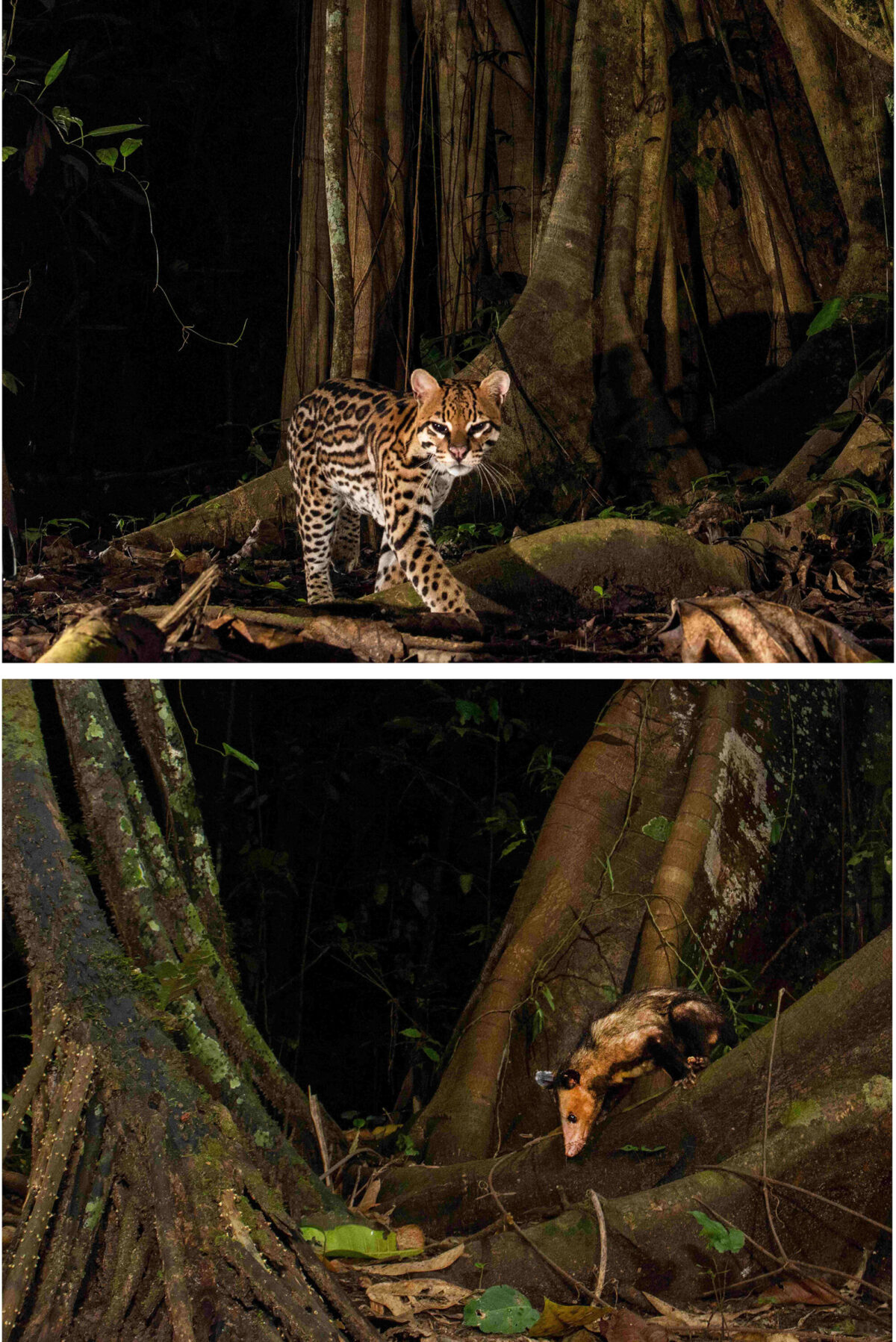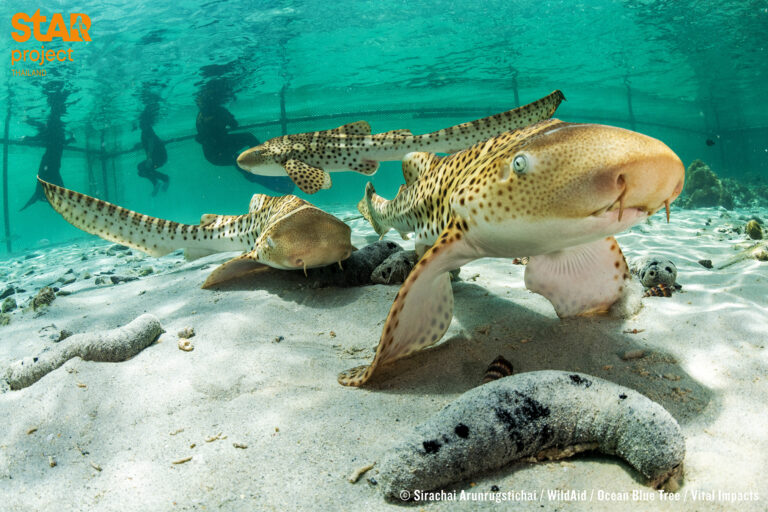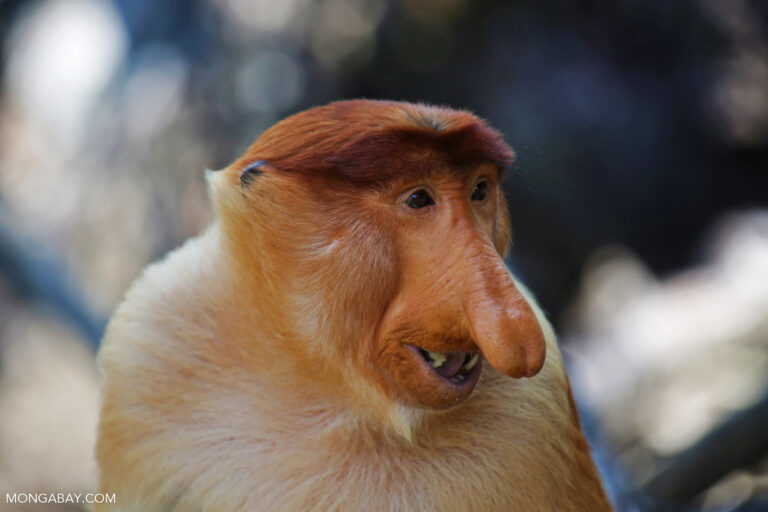Founder’s Briefs: An occasional series where Mongabay founder Rhett Ayers Butler shares analysis, perspectives and story summaries.
In the Peruvian Amazon, a series of curious encounters has left biologists scratching their heads.
Camera traps have captured an unexpected partnership: solitary, nocturnal ocelots (Leopardus pardalis) strolling alongside common opossums (Didelphis marsupialis). Not once, but four times, in distinct locations over several years, the feline predator and its potential prey were seen moving together—sometimes even returning along the same path minutes later, still in tandem. The opossum, far from appearing alarmed, showed no signs of distress.

This behavior is not only puzzling; it is without precedent. Associations between solitary carnivores and omnivores—especially those that occasionally dine on one another—are vanishingly rare. Yet further evidence suggests this pairing is more than happenstance. In field experiments, opossums showed a distinct preference for the scent of ocelots over that of pumas or neutral controls. They lingered, sniffed, and rubbed themselves against the ocelot-scented fabrics, as though seeking some form of chemical communion.
Why cozy up to a cat that might eat you? The researchers, writing in the journal Ecosphere, suggest two possibilities: improved foraging efficiency or olfactory camouflage. Opossums may benefit from the ocelot’s hunting prowess, while the ocelot may gain from masking its scent with the opossum’s pungency. There is precedent in the animal kingdom: coyotes and badgers have been known to hunt cooperatively, trumpetfish hide behind larger fish to ambush prey, and some marsupials resist snake venom—knowledge the ocelot may intuitively exploit.
“Opossums have a strong smell, and a close-by ocelot might help hide the opossum’s scent from bigger predators, or the opossum’s odor might mask the ocelot’s presence from prey,” Ettore Camerlenghi, an ecologist at ETH Zurich and the lead author of the study, told the New York Times.
Whether this is mutualism, manipulation, or mere curiosity remains unknown. But the discovery is a reminder of how little is understood about rainforest dynamics. Even in well-trodden ecosystems, the wild has secrets yet to reveal—one cautious step at a time.














